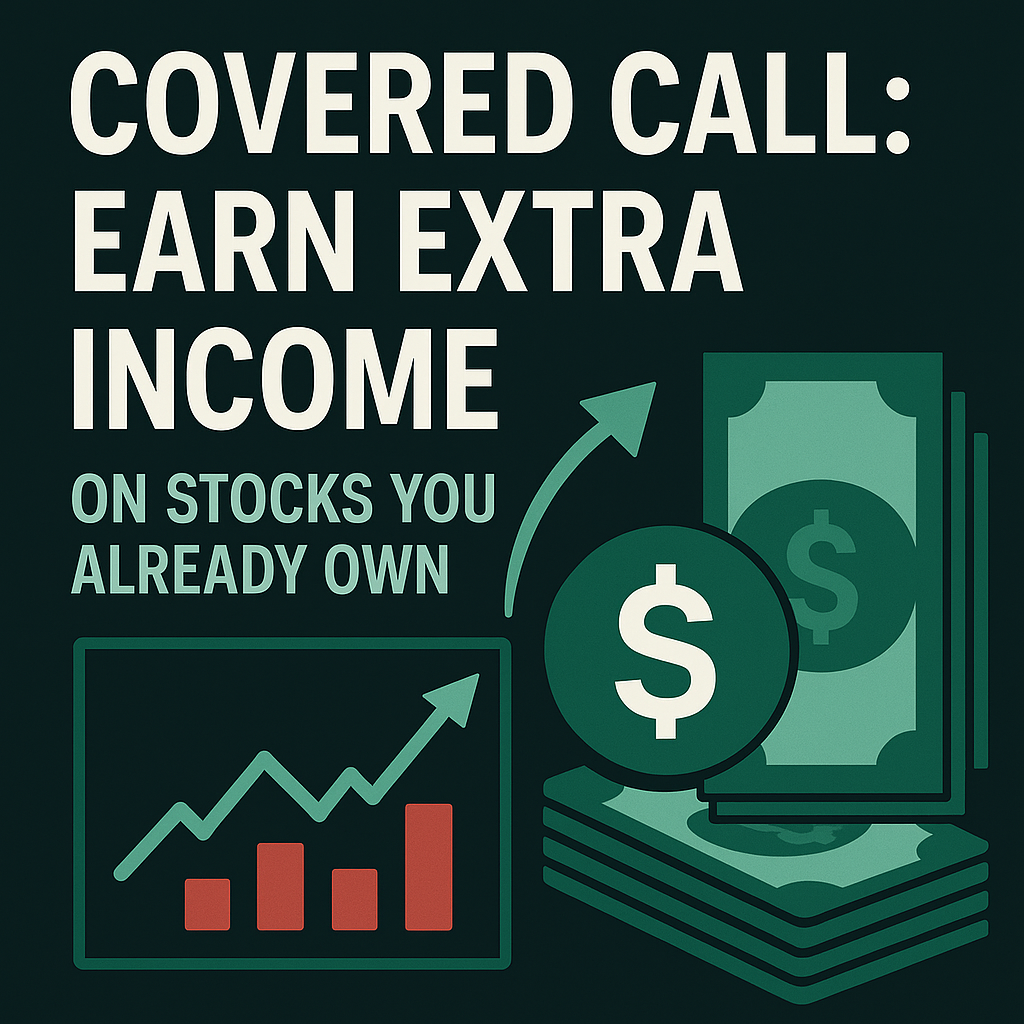Covered Call: Earn Extra Income on Stocks You Already Own

If you own shares of a stock and want to generate extra income — especially in a sideways or slightly bullish market — the Covered Call strategy might be your new best friend. This popular options strategy allows you to collect premium income while potentially selling your shares at a target price.
In this blog post, we’ll explain how the Covered Call works, walk through the max profit/loss scenarios, and show how selecting the right strike price and expiration date can significantly shape your results.
What Is a Covered Call?
A Covered Call involves:
- Owning 100 shares of a stock
- Selling (writing) a call option against those shares
By selling the call, you receive a premium upfront, and agree to sell your shares at the strike price if the stock is above that price by expiration.
It’s a great way to generate income from stocks you already hold — especially when you expect modest or no movement in the near term.
Max Profit and Max Loss
Max Profit:
The maximum profit occurs if the stock finishes at or above the strike price at expiration. You’ll sell your shares at the strike price and keep the premium.
Max Profit = (Strike Price – Purchase Price) + Premium Collected
Example:
- Buy stock at $95
- Sell $100 call for $2 premium
- Max profit = ($100 – $95) + $2 = $7 per share or $700 total
Max Loss:
Your downside is the same as owning the stock minus the premium you received. If the stock drops to $0, the loss is:
- Max Loss = Stock Price – Premium Collected
- In our example: $95 – $2 = $93 x 100 = $9,300
You can still lose money, but the premium helps cushion the drop.
Break-Even Price:
Purchase Price – Premium Collected
→ $95 – $2 = $93
Why Use a Covered Call?
1. Generate Passive Income
Even if the stock goes nowhere, you keep the premium. This is like earning rent on stocks you already own.
2. Set a Target Sell Price
If you’re happy to sell at a higher price, you get paid to wait. If it doesn’t reach that price, you keep the shares and the premium.
3. Downside Cushion
The premium collected slightly reduces your cost basis and helps offset small losses.
4. Neutral to Slightly Bullish Outlook
Ideal when you think the stock will stay flat or rise slightly — not skyrocket.
How Strike Price and Expiration Matter
1. Strike Price Selection
- Out-of-the-Money (OTM):
- Strike above current stock price
- Allows for capital gains + premium
- Lower chance of assignment, lower premium
- At-the-Money (ATM):
- Strike equals stock price
- Higher premium, higher chance of assignment
- In-the-Money (ITM):
- Strike below current price
- Highest premium, almost guaranteed assignment
- Less upside
🧠 Tip: Use OptionsProfitCalculator.com to visualize how each strike affects your total return.
2. Expiration Date Selection
- Short-Term (1–4 weeks):
- Higher time decay (theta), faster premium collection
- Needs more frequent monitoring
- Long-Term (1–3 months or more):
- Lower decay, more breathing room
- Premiums can be larger, but slower to materialize
Shorter expirations are more premium efficient, but require more hands-on management.
Example Scenario
You own 100 shares of XYZ, currently trading at $95.
You sell a $100 call expiring in 30 days and collect $2.00 premium.
- Premium collected: $200
- If XYZ stays below $100, the option expires worthless. You keep your shares and the $200.
- If XYZ rises above $100, you’re assigned:
- Sell shares at $100
- Total return = ($100 – $95) + $2 = $7 per share = $700
- If XYZ falls, you still own the stock — but the premium lowers your cost basis to $93.
Key Takeaways
- A Covered Call is a low-risk, income-focused strategy.
- It’s best used on stocks you already own and don’t mind selling.
- Max profit is capped at the strike price + premium.
- Max loss is limited to the stock dropping to zero, minus the premium collected.
- Carefully choose strike price and expiration to match your goals (income vs. upside).
Try modeling your Covered Call trades with live pricing at OptionsProfitCalculator.com — and take the guesswork out of your next trade.